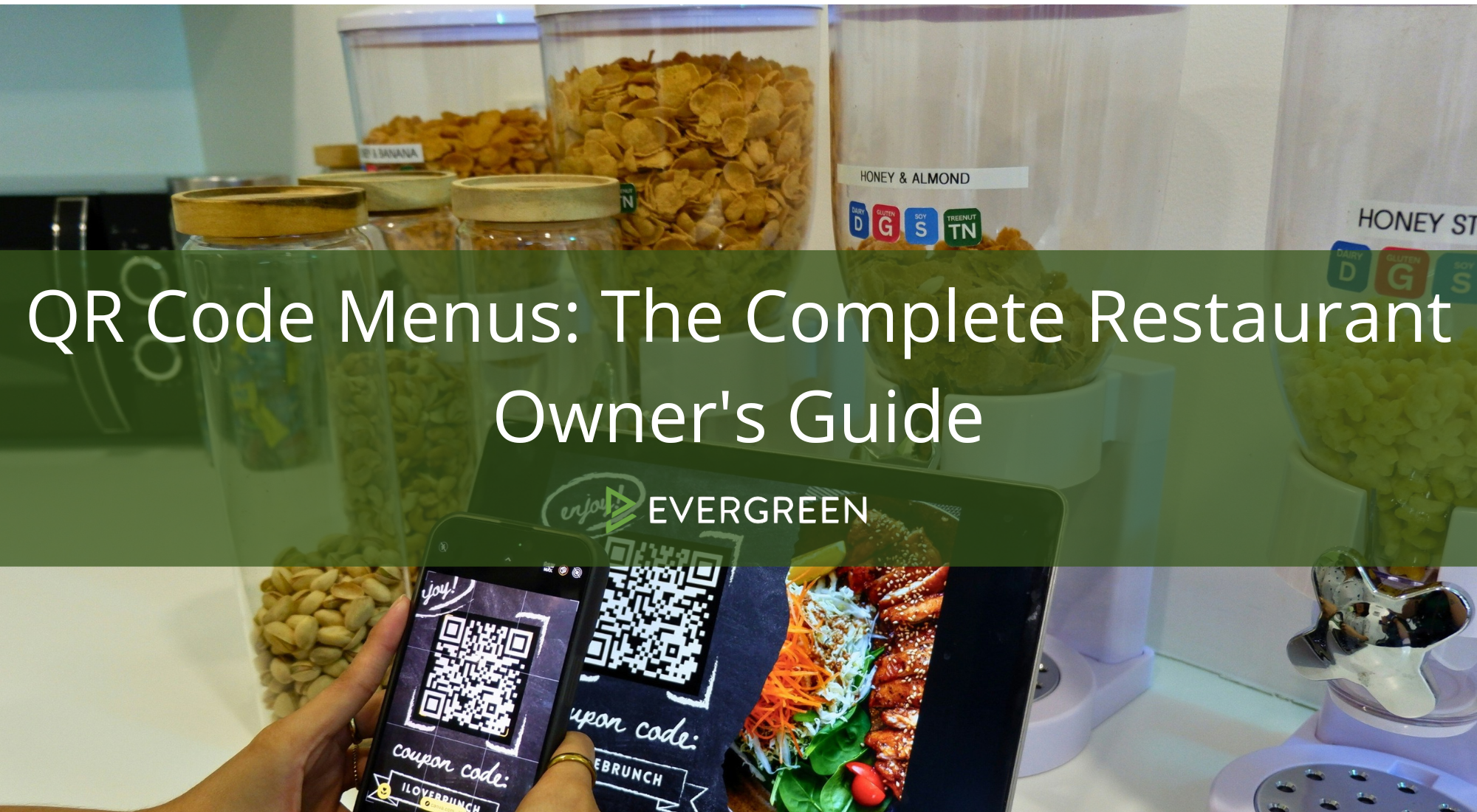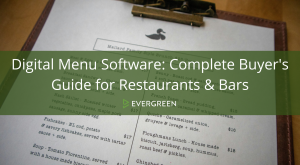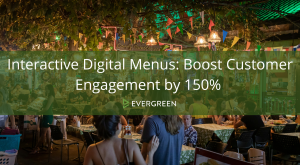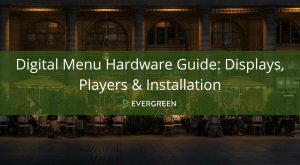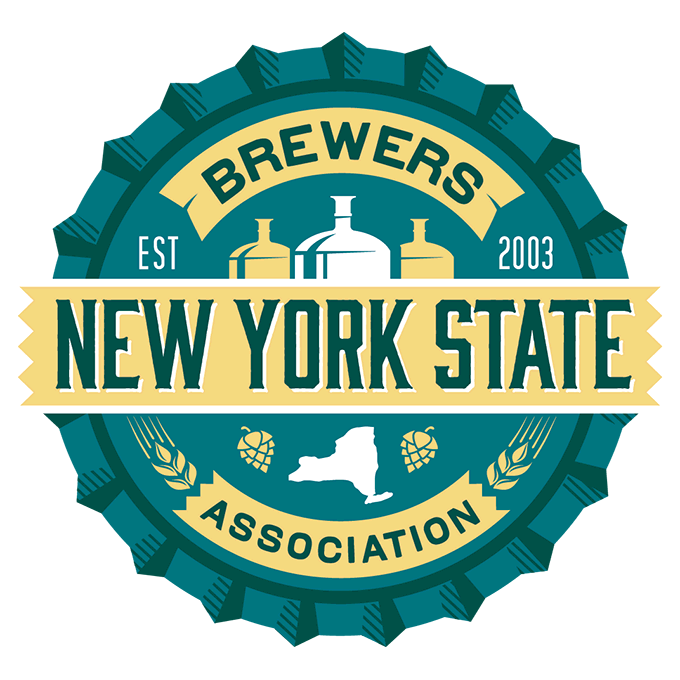QR code menus have evolved from pandemic necessity to permanent competitive advantage. In 2025, 85% of restaurants continue using QR codes, with 92% of customers comfortable with the technology. Smart restaurants are leveraging QR codes beyond basic menu access to create comprehensive digital menu experiences that drive customer engagement and business growth.
Here we’ll go over advanced QR code strategies, implementation best practices, and emerging technologies that separate industry leaders from followers in the digital dining arena.
The QR Code Revolution: Beyond COVID Compliance
Current Market Statistics and Adoption Rates
The QR code arena has matured significantly since 2020:
85% of restaurants maintain QR code menu systems (down from 95% peak in 2022)
92% of consumers comfortable using QR codes for restaurant menus
67% of diners prefer restaurants offering both digital and traditional menu options
156% increase in QR code scan rates compared to pre-pandemic levels
$3.2 billion in QR code technology investments by restaurants in 2024
Consumer Behavior Evolution
Demographic Preferences:
Gen Z (18-27): 94% prefer QR codes, expect advanced features and personalization
Millennials (28-43): 89% adoption rate, value convenience and speed
Gen X (44-59): 78% comfortable with QR codes, prefer simple implementations
Baby Boomers (60+): 52% adoption rate, require backup traditional menus
International Visitors: 96% familiarity due to global QR code adoption
Usage Pattern Analysis:
Peak Usage Times: Friday-Sunday evenings (78% scan rate)
Average Session Duration: 4.2 minutes on QR code menus
Return Behavior: 67% of customers scan QR codes on repeat visits
Device Preferences: 89% smartphone usage, 11% tablet usage
Social Sharing: 34% share menu items or restaurant experiences via QR code access
Advanced QR Code Implementation Strategies
Progressive Web App (PWA) Integration
Beyond Basic Menu Display:
Modern QR code implementations create native app experiences without app store downloads:
Core PWA Features:
Offline Capability: Menu browsing without internet connection after initial load
Push Notifications: Order status updates and promotional messaging
Home Screen Installation: Add to device home screen for easy repeat access
Native App Feel: Full-screen experience with smooth animations and interactions
Background Sync: Order processing and data synchronization when connectivity returns
Advanced PWA Capabilities:
Camera Integration: Photo sharing and social media connectivity
Location Services: Table service coordination and delivery tracking
Payment Processing: Secure in-app payment with stored customer information
Loyalty Integration: Points tracking and reward redemption
Personalization: Customized content based on customer preferences and history
Implementation Requirements:
Service Worker: Background processing and offline functionality
Web App Manifest: Installation and display configuration
HTTPS Connection: Secure connection required for PWA features
Responsive Design: Optimal display across all device sizes and orientations
Performance Optimization: Fast loading times and smooth interactions
Personalization and Customer Data Integration
Dynamic Content Customization:
Location-Based Personalization: Content adjusted based on customer location and preferences
Time-Based Adaptation: Menu sections emphasized based on time of day and historical patterns
Weather Integration: Seasonal and weather-appropriate menu recommendations
Dietary Preferences: Automatic filtering and highlighting based on customer dietary restrictions
Purchase History: Personalized recommendations and reorder shortcuts for returning customers
Data Collection and Analysis:
Behavioral Tracking: Menu browsing patterns and engagement metrics
Preference Learning: Dietary restrictions, favorite items, and spending patterns
Session Analytics: Time spent, pages viewed, and conversion rates
Device Information: Screen size, operating system, and performance optimization data
Social Media Integration: Customer social profiles and sharing behavior analysis
Privacy and Compliance:
GDPR Compliance: European data protection regulation adherence
CCPA Requirements: California Consumer Privacy Act compliance
Opt-In Consent: Clear customer consent for data collection and usage
Data Minimization: Collecting only necessary information for service improvement
Transparency: Clear privacy policies and data usage explanations
Multi-Language and Accessibility Features
Global Customer Support:
Real-Time Translation: Automatic language detection and menu translation
Cultural Adaptation: Culturally appropriate imagery, colors, and content presentation
Currency Conversion: Dynamic pricing display in customer’s preferred currency
Local Preferences: Regional dish variations and dietary accommodation
Cultural Sensitivity: Respectful presentation of international cuisine and customs
Accessibility Compliance:
Screen Reader Compatibility: Full compatibility with assistive technology devices
High Contrast Options: Visual accessibility for customers with vision impairments
Font Size Control: Customer-adjustable text sizing for optimal readability
Voice Navigation: Audio menu reading and voice-controlled navigation
Motor Accessibility: Large touch targets and simplified interaction methods
Implementation Standards:
WCAG 2.1 AA Compliance: Web Content Accessibility Guidelines adherence
Section 508 Compatibility: Federal accessibility requirements for public accommodations
ADA Compliance: Americans with Disabilities Act digital accessibility requirements
Testing Protocols: Regular accessibility testing with disabled user feedback
Alternative Access: Traditional menu backup for customers unable to use digital menu options
Technology Integration and Advanced Features
POS and Kitchen Display System Connectivity
Real-Time Order Management:
Direct POS Integration: Orders flow directly from QR code menu to kitchen systems
Kitchen Display Sync: Real-time order status updates and preparation tracking
Inventory Integration: Live menu updates based on ingredient availability
Staff Notification: Automatic alerts for special requests and order modifications
Payment Processing: Seamless integration with existing payment systems and processes
Order Accuracy and Efficiency:
Digital Order Clarity: Elimination of handwriting interpretation and verbal miscommunication
Modification Tracking: Precise recording of customer customizations and special requests
Allergy Alerts: Automatic kitchen notifications for dietary restrictions and allergies
Preparation Instructions: Clear cooking instructions and timing requirements
Quality Control: Order verification and accuracy checking systems
Social Media and Marketing Integration
Viral Marketing Opportunities:
Social Sharing Features: Easy sharing of menu items, dishes, and restaurant experiences
Photo Integration: Customer photo submission and restaurant gallery features
Hashtag Campaigns: Branded hashtag promotion and user-generated content encouragement
Influencer Connectivity: Special features and exclusive content for social media influencers
Contest Integration: Social media contests and engagement campaigns through QR codes
Customer Engagement Tools:
Interactive Elements: Games, quizzes, and entertainment while waiting for food
Community Features: Customer reviews, ratings, and recommendation systems
Event Promotion: Special event announcements and reservation systems
Newsletter Signup: Email list building and promotional communication opt-ins
Feedback Collection: Real-time feedback collection and response systems
Advanced Analytics and Business Intelligence
Comprehensive Performance Tracking:
Menu Item Analytics: Individual dish performance, popularity trends, and profitability analysis
Customer Journey Mapping: Complete tracking from QR scan to order completion
A/B Testing Framework: Systematic testing of menu layouts, descriptions, and pricing
Seasonal Trend Analysis: Long-term pattern recognition and forecasting capabilities
Competitive Analysis: Market positioning and customer preference insights
Revenue Optimization Tools:
Dynamic Pricing Testing: Price sensitivity analysis and optimal pricing discovery
Upselling Effectiveness: Cross-selling and upselling campaign performance measurement
Promotional Impact: ROI analysis for special offers and limited-time promotions
Customer Lifetime Value: Long-term customer worth calculation and retention strategies
Profit Margin Analysis: Individual item profitability and menu optimization recommendations
Design and User Experience Best Practices
Mobile-First Design Principles
Responsive Design Framework:
Touch-Friendly Interface: Large buttons and easy navigation for finger interaction
Scroll Optimization: Smooth scrolling with logical information hierarchy
Loading Speed: Fast page loads optimized for various network conditions
Image Compression: High-quality visuals with minimal file sizes for quick loading
Progressive Loading: Priority content loading with background image enhancement
Navigation and Information Architecture:
Intuitive Menu Structure: Logical categorization matching customer mental models
Search Functionality: Powerful search with filters for dietary restrictions and preferences
Quick Access Features: Shortcuts to popular items, specials, and previous orders
Visual Hierarchy: Clear importance ranking through typography, color, and spacing
Breadcrumb Navigation: Easy path tracking and navigation through complex menu structures
Visual Design and Brand Integration
Photography and Visual Content:
Professional Food Photography: High-quality images that accurately represent dishes
Consistent Styling: Uniform photography style reflecting restaurant brand and atmosphere
Appetite Enhancement: Visual techniques that increase perceived value and desirability
Portion Accuracy: Realistic representation of actual serving sizes and presentation
Seasonal Updates: Fresh photography reflecting seasonal ingredients and preparations
Brand Consistency and Identity:
Color Palette Integration: Restaurant brand colors throughout digital menu experience
Typography Harmony: Font selection reflecting restaurant personality and readability
Logo and Branding: Strategic brand element placement without overwhelming menu content
Voice and Tone: Consistent brand personality in menu descriptions and customer communication
Cultural Alignment: Design elements reflecting restaurant concept and target demographic
Customer Journey Optimization
Conversion Rate Enhancement:
Strategic Item Placement: High-margin items positioned in prime visual real estate
Persuasive Copywriting: Compelling descriptions that increase order value and satisfaction
Social Proof Integration: Customer reviews, ratings, and popularity indicators
Scarcity Marketing: Limited availability messaging and seasonal item highlighting
Call-to-Action Optimization: Clear ordering buttons and process flow guidance
Friction Reduction:
Simplified Ordering Process: Minimal steps from menu browsing to order completion
Guest Checkout Options: Ordering without account creation for first-time customers
Payment Method Variety: Multiple payment options including mobile wallets and contactless
Order Confirmation: Clear confirmation with estimated timing and pickup instructions
Customer Support: Easy access to help and customer service through digital channels
Security and Privacy Considerations
Data Protection and Customer Privacy
Security Infrastructure:
SSL Encryption: Secure data transmission between customer devices and restaurant systems
PCI Compliance: Payment card industry security standards for payment processing
Data Encryption: Customer information protection both in transit and at rest
Regular Security Audits: Periodic security assessments and vulnerability testing
Access Control: Role-based permissions and secure staff access to customer information
Privacy Policy and Transparency:
Clear Privacy Notices: Easily accessible information about data collection and usage
Opt-Out Options: Customer control over data sharing and marketing communications
Data Retention Policies: Clear timelines for customer data storage and deletion
Third-Party Integrations: Transparency about data sharing with technology partners
Customer Rights: Easy processes for data access, correction, and deletion requests
QR Code Security and Anti-Fraud Measures
QR Code Protection:
Unique Code Generation: Individual QR codes for each table or customer session
Time-Limited Validity: Expiring QR codes preventing unauthorized access and fraud
Encryption Integration: Secure data encoding within QR code structure
Anti-Tampering Measures: Detection and prevention of QR code replacement or modification
Regular Code Rotation: Systematic QR code updates preventing long-term exploitation
Fraud Prevention:
IP Address Monitoring: Detection of suspicious access patterns and geographic anomalies
Device Fingerprinting: Identification of fraudulent devices and repeat offenders
Transaction Limits: Reasonable ordering limits preventing fraudulent large orders
Staff Verification: Manual verification processes for suspicious orders or customer behavior
Customer Authentication: Optional account creation with verified contact information
ROI Measurement and Performance Optimization
Key Performance Indicators (KPIs)
Customer Engagement Metrics:
QR Code Scan Rate: Percentage of customers who scan codes vs. request traditional menus
Session Duration: Time spent browsing digital menus compared to traditional menu usage
Page Views per Session: Depth of menu exploration and content engagement
Conversion Rate: Percentage of QR scans resulting in actual orders
Return Usage: Repeat customer QR code adoption and continued usage rates
Revenue Impact Analysis:
Average Order Value: Comparison of digital vs. traditional menu order values
Upselling Success: Effectiveness of digital upselling and cross-selling features
Promotional Response: Customer response rates to digital-exclusive offers and specials
Customer Lifetime Value: Long-term value of digitally-engaged customers
Cost Savings: Reduction in printing, menu replacement, and staff explanation time
Operational Efficiency Gains:
Order Accuracy: Error reduction through digital ordering vs. traditional methods
Service Speed: Time savings in ordering process and table turnover rates
Staff Productivity: Employee time savings enabling focus on customer service and experience
Menu Update Efficiency: Speed and cost of menu changes and promotional updates
Customer Satisfaction: Survey scores and feedback specifically related to digital menu experience
Optimization Strategies and A/B Testing
Content Testing Framework:
Menu Layout Variations: Testing different organizational structures and visual hierarchies
Description Testing: A/B testing menu item descriptions for engagement and conversion
Pricing Presentation: Different pricing display methods and psychological pricing techniques
Image Testing: Comparing different photography styles and presentation methods
Call-to-Action Testing: Button placement, color, and language optimization
Feature Performance Analysis:
Personalization Effectiveness: Impact of customized content on customer engagement and orders
Search Functionality: Usage patterns and effectiveness of search and filter features
Social Integration: Performance of sharing features and community elements
Loyalty Program: Engagement with digital loyalty features and point redemption
Payment Methods: Customer preferences and conversion rates by payment type
Continuous Improvement Process:
Weekly Performance Reviews: Rapid identification and implementation of optimization opportunities
Monthly Feature Assessment: Comprehensive analysis of new features and customer adoption
Quarterly Strategic Planning: Long-term digital strategy evaluation and competitive analysis
Annual Technology Review: Platform assessment and consideration of emerging technologies
Customer Feedback Integration: Systematic collection and implementation of customer suggestions
Integration with Loyalty Programs and CRM
Digital Loyalty Program Enhancement
Seamless Loyalty Integration:
Automatic Account Creation: Frictionless loyalty program enrollment through QR code usage
Points Visualization: Real-time points balance and earning potential display
Reward Redemption: Easy in-menu reward selection and automatic application
Tier Recognition: VIP status display and exclusive menu access for premium members
Achievement Gamification: Progress tracking and milestone celebration for engagement
Personalized Rewards and Offers:
Behavioral Targeting: Customized offers based on ordering patterns and preferences
Birthday and Anniversary: Automatic special occasion recognition and personalized offers
Frequency Rewards: Incentives for regular customers and visit frequency increases
Social Sharing Bonuses: Points for social media engagement and referral programs
Seasonal Campaigns: Time-limited loyalty bonuses and exclusive seasonal access
Customer Relationship Management (CRM) Integration
Comprehensive Customer Profiles:
Unified Customer View: Integration of QR code usage with existing customer data
Purchase History: Complete ordering history accessible through QR code account
Preference Learning: AI-powered preference detection and recommendation improvement
Communication History: Record of customer service interactions and feedback
Segmentation: Automated customer categorization for targeted marketing and service
Marketing Automation:
Triggered Communications: Automated emails and notifications based on QR code behavior
Win-Back Campaigns: Re-engagement strategies for inactive QR code users
Upselling Automation: Systematic promotion of higher-value items and experiences
Event Marketing: Targeted invitations and promotions for special events and occasions
Feedback Collection: Automated satisfaction surveys and review request systems
Emerging Technologies and Future Trends
Augmented Reality (AR) Integration
Enhanced Menu Experiences:
3D Food Visualization: Realistic 3D models of dishes accessible through QR codes
Portion Size Preview: Accurate size representation before ordering
Ingredient Exploration: Interactive ingredient identification and sourcing information
Nutritional Visualization: Graphical representation of nutritional content and health benefits
Preparation Process: Time-lapse cooking demonstrations and technique explanations
Interactive Restaurant Experiences:
Virtual Restaurant Tours: AR-guided tours of kitchen, preparation areas, and restaurant history
Chef Interactions: Virtual chef presentations and cooking tips
Table Games and Entertainment: AR games and activities while waiting for food
Historical Context: Cultural and historical information about dishes and restaurant
Social AR Experiences: Shared AR experiences for groups and families
Artificial Intelligence and Machine Learning
Predictive Personalization:
Demand Forecasting: AI-powered prediction of customer preferences and ordering patterns
Dynamic Menu Optimization: Automatic menu arrangement based on customer behavior
Intelligent Recommendations: Machine learning-powered suggestion engines
Price Optimization: AI-driven pricing strategies based on demand and customer sensitivity
Inventory Integration: Predictive ordering and waste reduction through AI analysis
Natural Language Processing:
Voice Menu Navigation: Spoken menu browsing and ordering capabilities
Chatbot Integration: AI customer service and ordering assistance
Sentiment Analysis: Customer feedback analysis and automatic response generation
Multi-Language Processing: Real-time translation and cultural adaptation
Content Generation: AI-powered menu description writing and optimization
Blockchain and Cryptocurrency Integration
Supply Chain Transparency:
Ingredient Traceability: Blockchain-verified ingredient sourcing and quality information
Sustainability Verification: Verified environmental impact and ethical sourcing data
Quality Assurance: Immutable quality control and freshness verification
Local Sourcing: Verified local supplier information and community impact data
Allergen Verification: Blockchain-secured allergen and dietary restriction information
Payment Innovation:
Cryptocurrency Payments: Bitcoin, Ethereum, and other digital currency acceptance
Loyalty Tokens: Blockchain-based loyalty points and rewards systems
Smart Contracts: Automated loyalty rewards and promotional contract execution
Cross-Restaurant Loyalty: Interoperable loyalty programs across restaurant networks
Micro-Transactions: Small-value transactions and tip processing through blockchain
Implementation Best Practices and Common Pitfalls
Successful Implementation Strategies
Phased Rollout Approach:
Pilot Testing: Single location testing with comprehensive feedback collection
Staff Training: Thorough education on QR code system operation and customer assistance
Customer Education: Clear instructions and customer support during transition period
Feedback Integration: Rapid response to customer concerns and system improvements
Gradual Feature Addition: Progressive enhancement rather than overwhelming initial deployment
Change Management:
Staff Buy-In: Early employee involvement in planning and system selection
Customer Communication: Advance notice and explanation of QR code implementation benefits
Traditional Menu Backup: Continued availability of physical menus during transition
Support Systems: Dedicated customer service for QR code assistance and troubleshooting
Performance Monitoring: Real-time tracking of adoption rates and customer satisfaction
Common Implementation Mistakes
Technology-First Approach:
Problem: Focusing on features rather than customer needs and business objectives
Solution: Customer-centric design prioritizing ease of use and value creation
Prevention: Thorough customer research and user experience testing before implementation
Inadequate Staff Training:
Problem: Employees unable to assist customers or troubleshoot basic QR code issues
Solution: Comprehensive training programs and ongoing support for staff members
Prevention: Staff involvement in selection process and adequate training time allocation
Poor Mobile Experience:
Problem: QR codes leading to websites not optimized for mobile devices
Solution: Mobile-first design with responsive layouts and touch-friendly interfaces
Prevention: Extensive mobile testing across various devices and network conditions
Privacy and Security Oversights:
Problem: Inadequate data protection and customer privacy consideration
Solution: Comprehensive security measures and transparent privacy policies
Prevention: Legal compliance review and security audit before launch
Cost-Benefit Analysis and ROI Calculation
Implementation Costs and Investment Requirements
Technology Investment:
QR Code Generation: $50-500 monthly depending on features and volume
Website/App Development: $5,000-50,000 for custom solutions
POS Integration: $2,000-15,000 for system connectivity and customization
Training and Support: $1,000-10,000 for staff education and ongoing assistance
Marketing and Promotion: $2,000-20,000 for customer education and adoption campaigns
Ongoing Operational Costs:
Hosting and Maintenance: $100-1,000 monthly for system operation and support
Content Updates: $500-5,000 monthly for menu changes and content management
Customer Support: $200-2,000 monthly for customer assistance and technical support
Analytics and Optimization: $300-3,000 monthly for performance tracking and improvement
Security and Compliance: $500-5,000 monthly for data protection and regulatory compliance
Revenue Enhancement Opportunities
Direct Revenue Impact:
Average Order Value Increase: 15-35% through digital upselling and enhanced presentation
Customer Frequency: 20-45% increase through convenience and loyalty program integration
Promotional Effectiveness: 25-60% improvement in special offer response rates
Labor Cost Reduction: 10-25% savings in order-taking and menu explanation time
Menu Update Efficiency: 80-95% reduction in printing and distribution costs
Long-Term Strategic Benefits:
Customer Data Collection: Valuable insights enabling better business decisions and personalization
Brand Differentiation: Modern image attracting tech-savvy customers and positive reviews
Operational Flexibility: Rapid menu changes and promotional adaptation capabilities
Competitive Advantage: Market positioning as innovative and customer-focused establishment
Future Technology Platform: Foundation for additional digital features and enhancements
ROI Calculation Framework:
text
Annual ROI = (Annual Benefits – Annual Costs) / Annual Costs × 100
Typical ROI Range: 150-400% for well-implemented QR code systems
Payback Period: 6-18 months depending on implementation scope and optimization
Conclusion: Mastering QR Code Menu Success in 2025
QR code menus have evolved from emergency pandemic solutions to sophisticated digital engagement platforms that drive customer satisfaction and business growth. The restaurants that thrive in 2025 are those that leverage QR codes strategically, focusing on customer experience enhancement rather than simple cost savings.
Key Success Factors:
Customer-Centric Design: Prioritizing user experience over technological complexity
Comprehensive Integration: Connecting QR codes with POS, loyalty, and marketing systems
Continuous Optimization: Regular testing and improvement based on performance data
Staff Empowerment: Training teams to support and enhance digital experiences
Strategic Innovation: Leveraging emerging technologies for competitive advantage
The Path Forward:
Success with QR code menus requires:
Strategic Planning: Clear objectives aligned with business goals and customer needs
Quality Implementation: Professional development and user experience optimization
Customer Education: Gradual adoption support and traditional menu backup options
Performance Monitoring: Comprehensive analytics and continuous improvement processes
Future Readiness: Platform scalability for emerging technologies and customer expectations
The competitive advantage belongs to restaurants that understand QR codes as customer engagement platforms rather than simple menu digitization tools. By focusing on value creation, experience enhancement, and strategic integration, QR code menus become powerful drivers of customer loyalty, operational efficiency, and sustainable business growth.
The investment in comprehensive QR code menu systems pays dividends in customer satisfaction, operational efficiency, and competitive positioning that extend far beyond the initial technology deployment.

